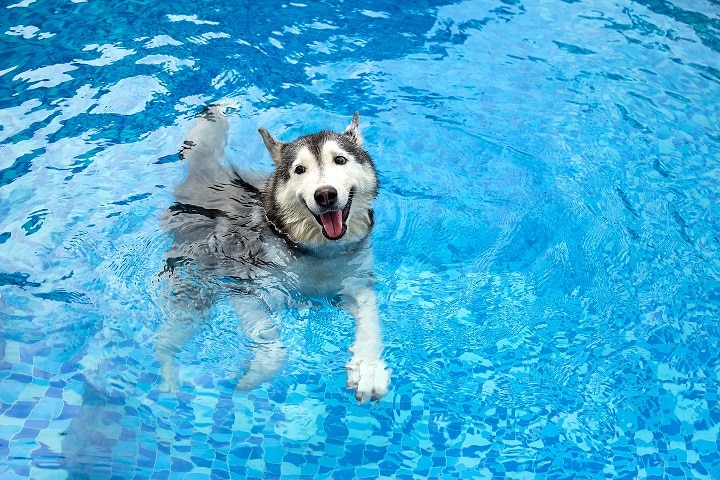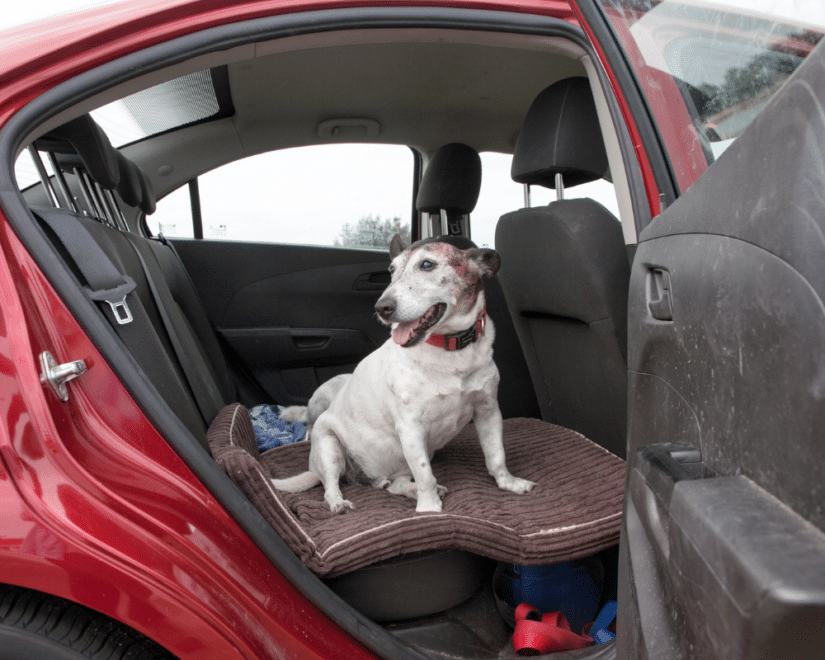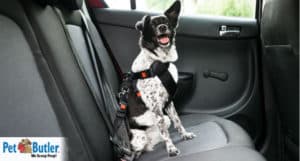Summer is the time of year when people may choose to spend time outside, soaking up the sun, and enjoying the hottest part of the year. As much as some of us love the summer months, our pets might not feel the same way. Carrying around that big fluffy coat and playing for hours on end can be exhausting, even dangerous. Luckily, Pet Butler has the tips you need to help your pet stay safe and beat the summer heat.
Tip # 1: Don’t exercise your dog during the hottest parts of the day! If your daily routine includes taking walks around lunchtime, you should consider shifting your schedule to more temperate hours. The best time for your dog to be outside is around sunrise and sunset. Make sure that there’s enough shade for your pet to relax under when enjoying the day. If there are no trees or other shadowy objects in your backyard, think about buying tools like umbrellas to provide sufficient coverage. Another simple way to keep your pet cool, inside or outside, is to buy a fan. Having a nice chilly breeze is always relaxing, and it can help your pet stay comfortable even on the hottest days.
Tip #2: Playing in the water can help cool off your pet. There are many ways to creatively douse your pups. More energetic dogs love the chance to hop in a kiddie pool or sprinkler, and many pooches have been known to enjoy snacking on hose water or getting misted by spray bottles. But ensure that your hose water is safe for drinking or use filters to make the water potable beforehand. Another water-related activity is going to the local dog beach. Growing in popularity, these areas offer a very entertaining way to let your pet swim around and make new friends. Dog floaties and swim toys are especially helpful in these spaces.
Tip #3: A dog’s hydration is especially important. Although dogs don’t sweat as humans do, they still use up extra water in the summertime. Responsible owners need to keep track of the water bowl constantly. Offering water to your dog periodically is highly recommended, especially after they’ve been outside. The number one rule with hydrating in the summer is to not give your pet freezing water. If a pet is experiencing exhaustion or heat stroke, it’s possible for them to go into shock with freezing water. That said, frozen objects are a different story. Icepacks, frozen water bottles, or frozen Ziploc baggies are relaxing items that dogs can enjoy outside. Certain treats like popsicles and frozen bananas (as long as they’re vet-approved) can be a tasty snack, too.
Tip #4: Take care of your dog’s coat and skin. In the summer, it might be helpful to groom your dog’s coat a little more frequently. Brushing out extra fluff can be very relieving and making sure there are no irritable mats. Also, talk to your veterinarian and groomer about a summer trim. Some dogs benefit from having smaller and shorter coats in hot weather. Just be careful not to trim a dog’s undercoat, and never ever shave your pet: it can be very damaging to their skin and health long-term. There are also dog clothing products that provide similar relief. Cooling collars help chill the neck and chest of hot doggies, and other specialized clothes are available too. The other summertime grooming challenge is taking care of a dog’s skin. Short-haired or bald dogs can sunburn easily, but even dogs with a ton of fur can burn on their ears, nose, and belly can. Try using dog-specific sunscreens or light, breezy clothes to help hide their skin.
When the summer heat is upon us, we must make sure that we are prepared to help our pets beat the heat.
At Pet Butler, we want you and your pet to live your best and healthiest lives, which is why we offer pet waste removal and other services year-round. We offer weekly, bi-weekly, monthly and one-time clean-up services to work with your schedule.



